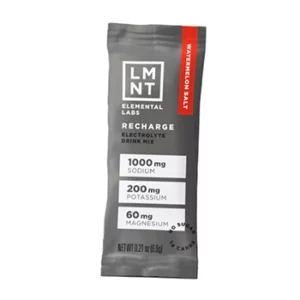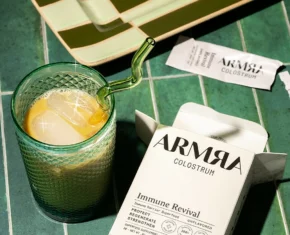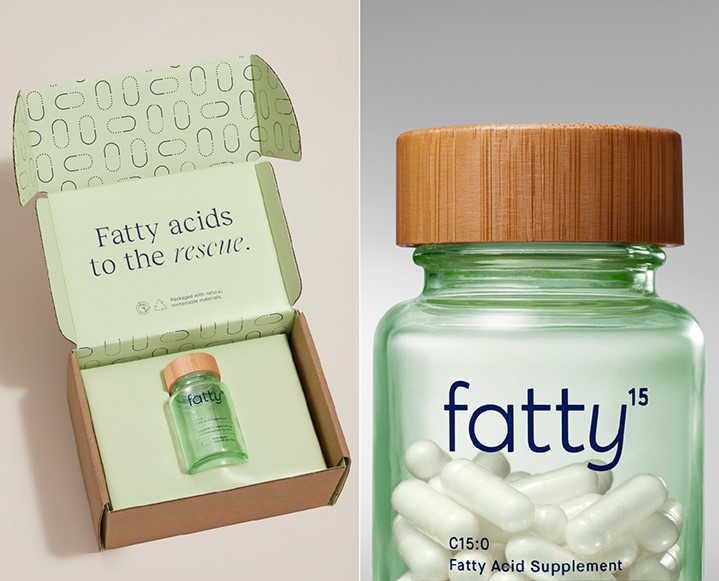To Potato or not to potato? It turns out it’s more about the kind of potatoes you’re eating. We’re not saying to start loading up on french fries, but the right starchy veggies are key for good gut health. We’re diving deep on the topic with our favorite gut health guru and founder of Body Ecology, Donna Gates (more on Donna here!).
Discover which rules to stick to, which ones to ditch and how to know your gut is getting the nourishment it deserves…
Starchy vegetables sometimes get a bad rap — they’re claimed to be high in sugar and touted as unhealthy and responsible for diabetes and weight gain. But what if I told you that certain starchy vegetables aren’t as bad for you as you think? The right ones have amazing qualities when it comes to creating a healthy inner ecosystem and healing certain digestive issues.
In addition to the various benefits for digestion and digestive orders, studies also show how resistant starch may decrease the pH level in the colon, assist the body in the production of short-chain fatty acids, lower the risk of diabetes and certain cancers, promote balanced blood sugar, help maintain healthy weight and lower bad cholesterol, decrease inflammation associated with obesity and offer cardiovascular benefits.
But before you throw all caution to the wind and indulge in eating french fries multiple times this week though, let’s back up. There are starches that can have a negative effect on the body, feeding yeast in the gut — these include white potatoes, sweet potatoes, corn, beans, legumes and dried peas.
The Gut-Health Benefits Of Starchy Veggies
Certain starchy vegetables are classified as resistant starch. Unlike certain complex carbohydrates (corn, certain beans and peas, white potatoes) that are broken down by the body and converted into sugar, these carbohydrates are not converted into sugar. Resistant starch resists being digested in the small intestine and is able to make its way to the large intestine where it’s used as food for good bacteria. So this non-digestible carbohydrate is a good dietary fiber (important for moving food through your digestive tract) and a prebiotic (food for the good guys). Prebiotics help those good guys to flourish in order to crowd out the bad guys to keep your gut microbiome in check and disease at bay.
The two types of fibers — soluble and insoluble — have different functions when it comes to gut health. A very important function of many soluble fibers is fermentation by beneficial bacteria to make short chain fatty acids (SCFAs), namely butyrate, propionate and acetate. Butyrate serves as an anti-inflammatory and “fuel of choice” for the cells lining the colon. It’s one of the more understood SCFAs and is linked to regulating gene expression, serving as an energy source for cell production and repair, and an antioxidant and anti-carcinogen.
Insoluble fibers hydrate the colon and disperse water with minerals, nutrients and some SCFAs into the vascular system to be absorbed and used by the body. Thus the bacteria can eat more and multiply, which increases stool bulk and promotes peristaltic action so you can eliminate. In order to reap the benefits from dietary fiber, eat a wide variety of high-fiber foods, and to eat enough of them some experts recommend 20 to 35 grams per day. But remember, if you have certain health issues this may not be a good option.
Tips For Choosing The Right Starchy Veggies
Many diseases begin with poor digestion. The principles of food combining and 80/20 both optimize digestion (along with fermented foods), thus taking the burden of working hard to digest food off the digestive tract. Let me explain:
Food combining is deliberately eating certain foods with other foods. When foods digest easily together it allows the stomach, small intestine and colon to do their jobs more efficiently. As a result, nutrients are more accessible. There is less bloating and gas in the digestive tract and also less inflammation. Incompatible foods that do not digest properly can ferment and cause an overproduction of sugars, indigestion and constipation. This also creates more toxins and acidity in the body. Regardless of whether you practice proper food combining principles or not (though I highly recommend you do), you can give your gut an extra boost to help break down food and improve nutrient absorption by taking digestive enzymes with each meal.
The principle of 80/20 works well in conjunction with food combining. Eat until your stomach is 80 percent full, leaving 20 percent for digestion. Also, 80 percent of the food on your plate should be land and/or ocean vegetables, with the remaining 20 percent reserved for a meat protein, grains or starch vegetables. Remember the saying, everything in moderation? A few more tips to remember:
+ Always eat grains, grain-like seeds (I recommend starting with soaked quinoa, amaranth, buckwheat or millet) and starchy vegetables with non-starchy and/or ocean vegetables.
+ The best starchy veggies are: acorn and butternut squash, lima beans, English peas, corn (fresh), water chestnuts, artichokes and Jerusalem artichokes, red skin potatoes (lowest in starch and sugar).
+ Combine them with non-starchy vegetables such as: asparagus, broccoli, cauliflower, cucumber, garlic, kale, collards, zucchini; ocean vegetables: kombu, wakame, hijiki, arame, agar, sea palm, dulse; and/or fats: coconut oil, olive oil, butter, ghee, avocado oil mayonnaise.
Here are also 3 recipe ideas from my cookbook that’ll get you started:
+ millet casserole, a steamed leafy green vegetable and yellow squash and leeks sautéed in butter.
+ buckwheat/quinoa/millet croquettes topped with the Body Ecology diet gravy, steamed greens and carrot-cauliflower soup
+ dill potato salad, watercress soup and a leafy green salad with Body Ecology diet salad dressing
+ acorn squash stuffed with curried quinoa, broccoli with seasoned butter and the sea vegetable hijiki with onions and carrots
How To Build A Healthier Microbiome
The best way to build and rebuild the microbial community in the intestines is through foods that are probiotic-rich. The fermentation process increases nutrient bioavailability and results in living strains of beneficial bacteria and yeast, active enzymes, amino acids, antioxidants, minerals and vitamins. I recommend cultured vegetables or a probiotic drink with every meal — especially when eating starchy vegetables — to reduce the sugar conversion.
And remember: You are a singular, one-of-a-kind individual — the same advice may not work for each of us. If there is a food I say is okay to eat because it doesn’t feed yeast, it doesn’t necessarily mean this exact food is right for you. Your body is unique. For those with SIBO, diabetes or any type of health issue, your diet (and/or genetics) may require you to stay away from certain foods. Use these tips as a general guideline, and be sure to test what works best for you and your unique body.
The Chalkboard Mag and its materials are not intended to treat, diagnose, cure or prevent any disease. All material on The Chalkboard Mag is provided for educational purposes only. Always seek the advice of your physician or another qualified healthcare provider for any questions you have regarding a medical condition, and before undertaking any diet, exercise or other health-related programs.















